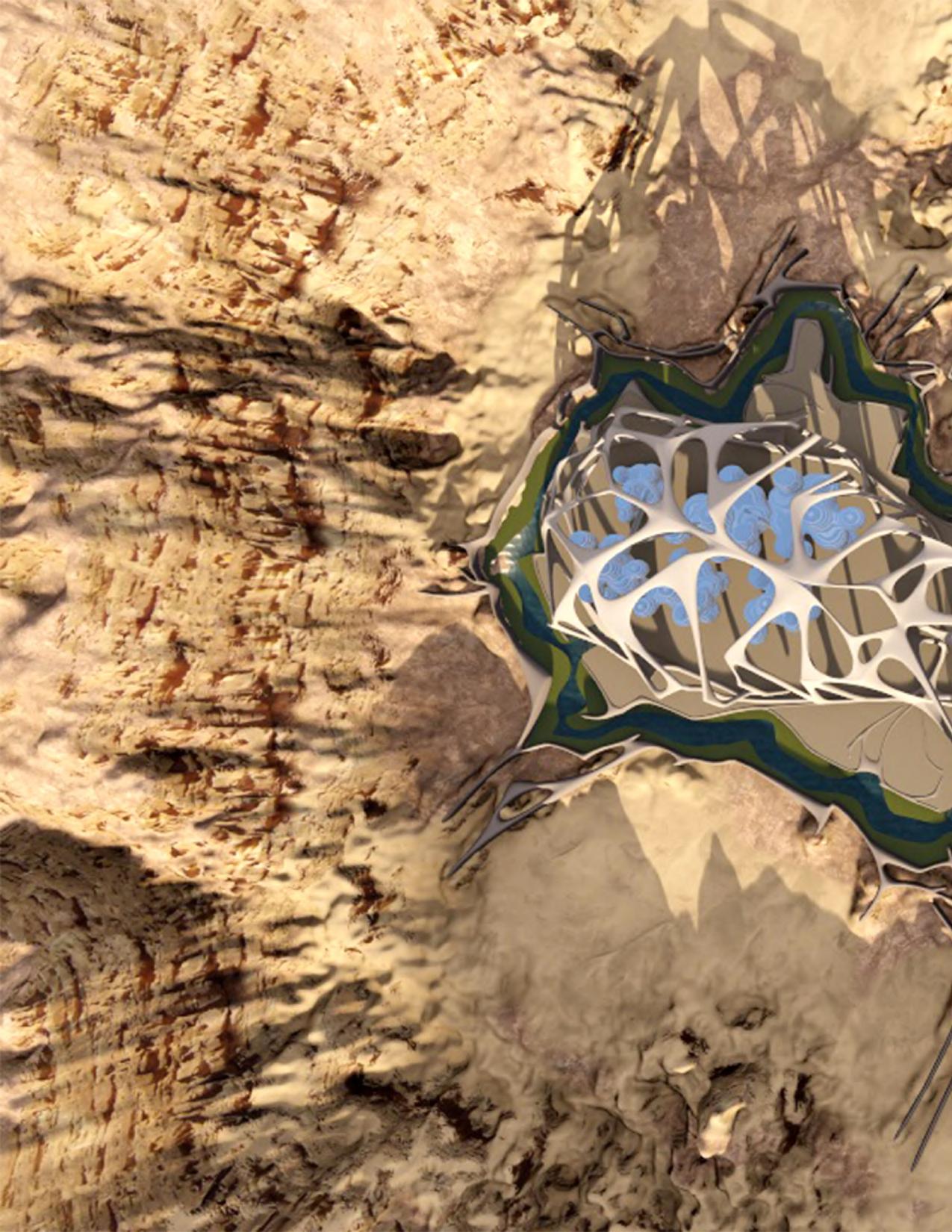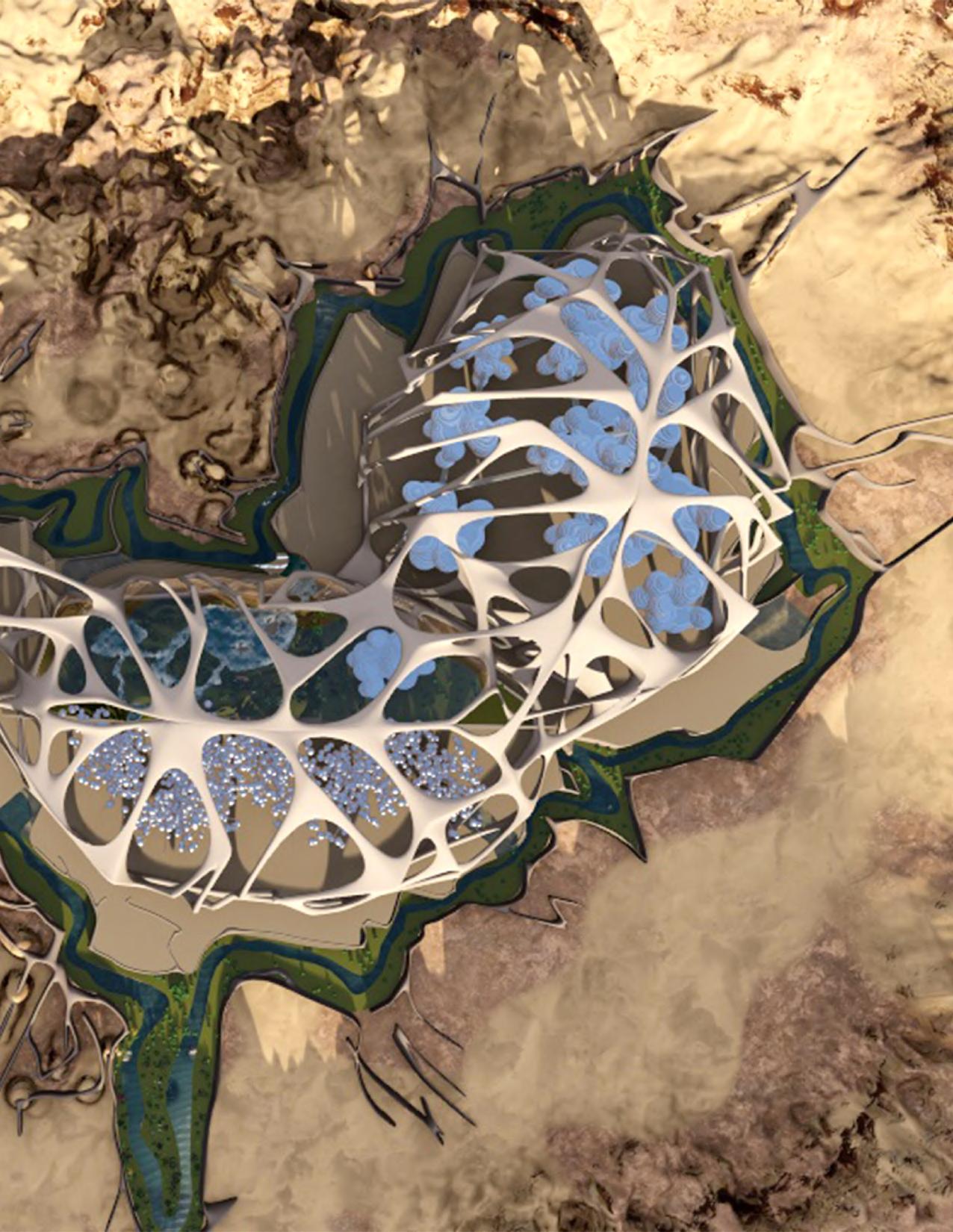
3 minute read
Mars Cities
The eventual colonisation of the Red Planet
We have looked at getting to Mars and even exploring it. But if humanity is truly to become an interplanetary species, then we must also figure out how to stay there. Not for years, but for decades and maybe, just maybe, even centuries and millennia.
Advertisement
One brilliant organisation that adopts a very holistic approach to looking into this is Mars City Design, founded by the visionary architect Vera Mulyani. Vera is commonly described as a Marschitect, and she created the organisation Mars City Design to run design challenges and workshops, exploring the concepts needed to make a long-term and large-scale thriving Martian city, where "people would be happy to live, work and love."
What sets MCD apart from the others is that it is truly a global and fully inclusive competition, open to all ages, and nationalities, to students and professionals, individuals and teams. Not only that but the wide breadth of concepts developed include not just housing, transportation, food/crops, and other essential infrastructure you would expect, but also music, arts, and other seemingly 'non-essential' areas, that nevertheless are all vital to the wellbeing and success of any long term community.
"More and more, we’re becoming aware that it’s essential to unite different disciplines together to collaborate instead of compete... We need to include the creative viewpoint in everything we do." - Vera Mulyani
The first annual MCD challenge was held in 2015. The international challenges are hosted in a different city each year, attended by participants from all over the world.
In 2016 the MCD competition received entires including global positioning systems, 3D printable and self-building structures, terraforming projects and even plans for entire bases and colonies. This year's Mars City Design challenge is all about urban farming on Mars, and looking for solutions to long-term sustainability.
Vera herself was also the team leader on a project called Alpha 3.0 in 2016, which successfully got into the top 10 runners up for the NASA 3D printed Mars habitat challenge. The Alpha 3.0 habitat that they designed was based around the natural shape of a Barchan Martian sand dune, and was even envisioned to slowly be blown across the Martian surface, at about a meter per year. It was also designed to be easily 3D printable from available local materials.
Mars City Design is also working on another very exciting project, the Mars Research Center which they plan to construct in the Mojave desert, where Martian habitats, labs, and all sorts of other things, even societal structures, can be tested in a sort of simulated Martian environment.
You can find out more about Mars City Design by visiting their website: https://www.marscitydesign.com/






For the 2017 challenge a MIT team submitted the Redwood Forest, a city design that mimics the way redwood trees grow on earth, with a number of domed habitats containing mini-ecosystems, placed on the Martian surface, and connected by a network of underground tunnels. The entire complex could house 10,000 people.
“On Mars, our city will physically and functionally mimic a forest, using local Martian resources such as ice and water, regolith (soil), and sun to support life. Designing a forest also symbolises the potential for outward growth as nature spreads across the Martian landscape.
Each tree habitat incorporates a branching structural system and an inflated membrane enclosure, anchored by tunnelling roots. The design of a habitat can be generated using a computational formfinding and structural optimisation workflow developed by the team. The design workflow is parametric, which means that each habitat is unique and contributes to a diverse forest of urban spaces.”





- Valentina Sumini














